Since ancient times, people have maintained a certain attitude of respect and fear towards the deceased, especially those who died in unusual circumstances such as suicide or hanging. In various countries, depending on different regions, there are rituals for offerings, purification, farewells, and comforting the souls of the departed.
For the people of Taiwan, when someone chooses to hang themselves to end their life, their relatives often organize a Song Ruk Tsong Ceremony (sending rice dumplings) to ward off evil spirits, hoping that the deceased can attain peace and bring tranquility to the living.

The Song Ruk Tsong Ceremony is an ancient folk ritual in Taiwan.
In fact, the Song Ruk Tsong Ceremony is a well-known ancient folk ritual in the Lugu area of Changhua County, Taiwan. As media developed, terrifying stories woven around this ritual began to spread, bringing significant fear to the local people.
Moreover, horror films inspired by the “sending rice dumplings” ceremony further accentuated the horror, making every mention of the Song Ruk Tsong evoke thoughts of something truly dreadful and malevolent.
The Song Ruk Tsong Ceremony is believed to have originated from Quanzhou, Fujian Province, China. Since Lugu is one of Taiwan’s important ports, this folk custom was introduced early on and developed into a cultural characteristic of the local people.
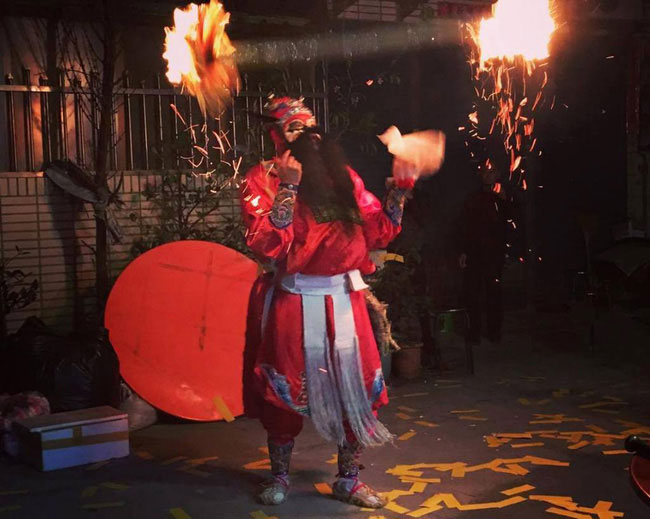
The Song Ruk Tsong Ceremony is believed to have originated from Quanzhou, Fujian Province, China.
In recent years, the Song Ruk Tsong ritual has not only been held in Lugu but has spread to many other areas such as Kaohsiung, Pingtung, and Yunlin. Based on the inheritance of folk customs, each place has different improvements, but the fear this ritual instills in the local people remains unchanged.
Song Ruk Tsong or “sending rice dumplings” is a euphemistic expression for the ritual dedicated to those who died by hanging. The rice dumplings from Taiwan are often tied with strings, resembling the image of a person hanging. The ancients wanted to express respect for the deceased in a more gentle way, which also serves to comfort the surviving relatives.
The people of Taiwan believe that dying by hanging is the most terrible death, and the deceased must have had many grievances and injustices in life. Therefore, when they die, their resentment accumulates on the ground, in their relics, and their souls may wreak havoc on others, even seeking a “replacement” to be reborn. Thus, the purpose of the Song Ruk Tsong Ceremony is to drive away evil spirits and pray for the deceased’s peace.
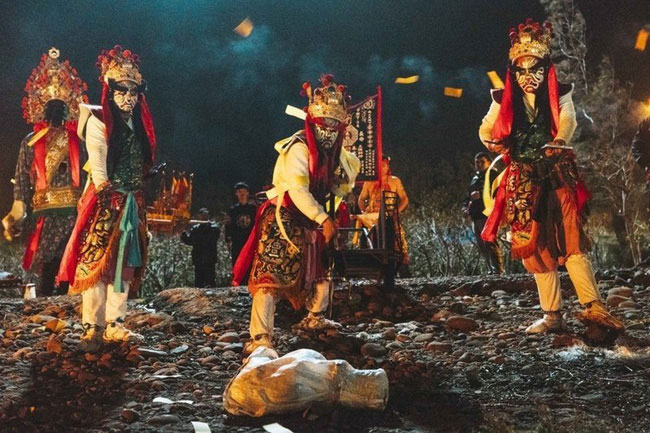
This is a ritual for those who died by hanging.
Not everyone can organize a Song Ruk Tsong ceremony; it must be conducted by experienced shamans or priests, and the cost for such a ceremony is not small. It is known that organizing a “sending rice dumplings” ceremony costs between 50,000 to 60,000 New Taiwan Dollars (approximately 40 to 50 million VND), and if the ceremony is managed by a temple, costs can reach up to 300,000 New Taiwan Dollars (approximately 247 million VND).
Before the ritual takes place, the route for the Song Ruk Tsong procession is carefully planned. It usually starts at a temple near the deceased’s location and ends at the seaside or a large ditch.
Local residents are notified to stay indoors during the ceremony to avoid encounters. At intersections along the Song Ruk Tsong route, offering tables are set up, and barriers are erected with notices: “Sorry, please redirect.”
During the ceremony, the shamans and priests wear dragon and tiger robes and perform the Chung Qui dance. They use various ritual tools such as paper talismans, bronze bells, horn trumpets, straw mats, salt, rice, and brooms to invite the gods from the temple to assist in suppressing evil spirits. Next, the shaman uses paper and grass effigies, places them in a container of joss paper, and carries them out of the homeowner’s house.
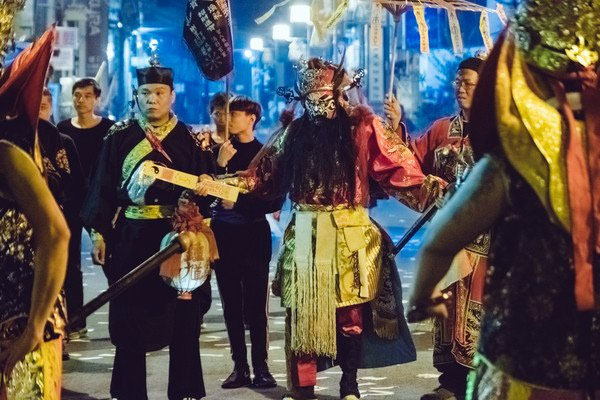
The purpose of the Song Ruk Tsong Ceremony is to drive away evil spirits and pray for the deceased.
The belongings of the deceased must be cleared away. If the person hung themselves from a beam, part of the beam must be removed. If they hung themselves at a door, the entire door must be taken down. Most importantly, the rope used by the deceased must be carried along.
The Song Ruk Tsong procession will set off firecrackers and play gongs and drums loudly along the route, with the last person in the procession continuously sweeping with a broom. The deceased’s belongings are taken to the beach or a large ditch and burned there, symbolizing that evil spirits will flow out to sea with the water and cannot return.
At the end of the ceremony, everyone must remain silent, without banging gongs or drums, and quietly return to the main hall, where the master will light incense and recite sutras to guide the deceased’s soul.
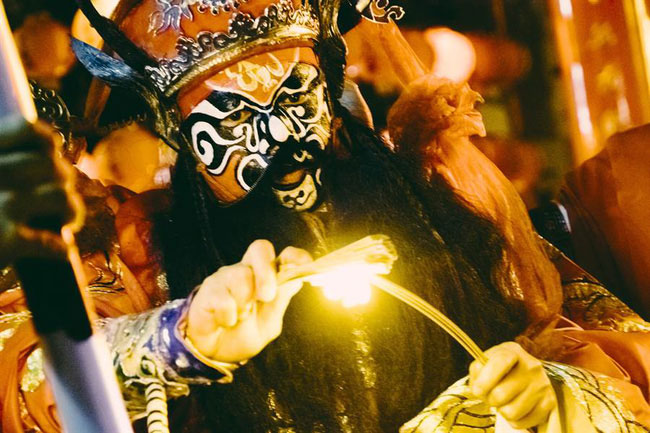
The Song Ruk Tsong procession will set off firecrackers and play gongs and drums loudly along the route.
Song Ruk Tsong is originally a folk ritual trusted by many people, but there are many baseless rumors surrounding this ceremony that further increase people’s fear.
For instance, there was a woman who secretly watched the Song Ruk Tsong procession pass her house and then had a fierce argument with her husband, ultimately choosing to hang herself.
Another story tells of a young man who, out of disbelief, secretly watched the Song Ruk Tsong ceremony from a window, after which he suddenly felt cold and lost consciousness. Fortunately, his mother discovered him hanging from a beam and managed to save him in time. When he woke up, he had no memory of what he had done or why he had acted so foolishly.
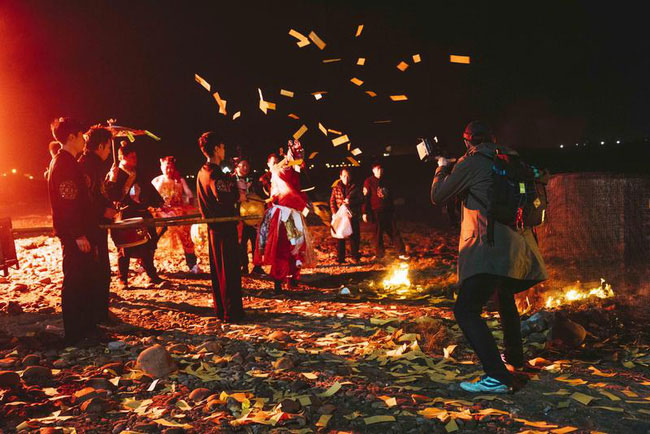
Many baseless rumors further increase people’s fear of this ritual.
In addition, many people say that if one follows the rules of the Ritual of Sending Off the Flesh, there is nothing to fear. Some of the rules include: once you join the procession, you must stay until the end; you must not say your name; you must not sneak a look if you are not part of the group; you must not turn around to talk on the way back; you must not wear necklaces or shawls; and women are not allowed to participate…
Typically, local residents are asked to stay indoors and keep their doors tightly shut when a procession passes by. However, in the event that someone accidentally sees the ceremony, it is advised that they should join the procession until the end to avoid any misfortune for themselves.
The Ritual of Sending Off the Flesh, like other sacrificial rites, should be viewed correctly and with respect, as it will not bring about many troubles or unnecessary fears.



















































